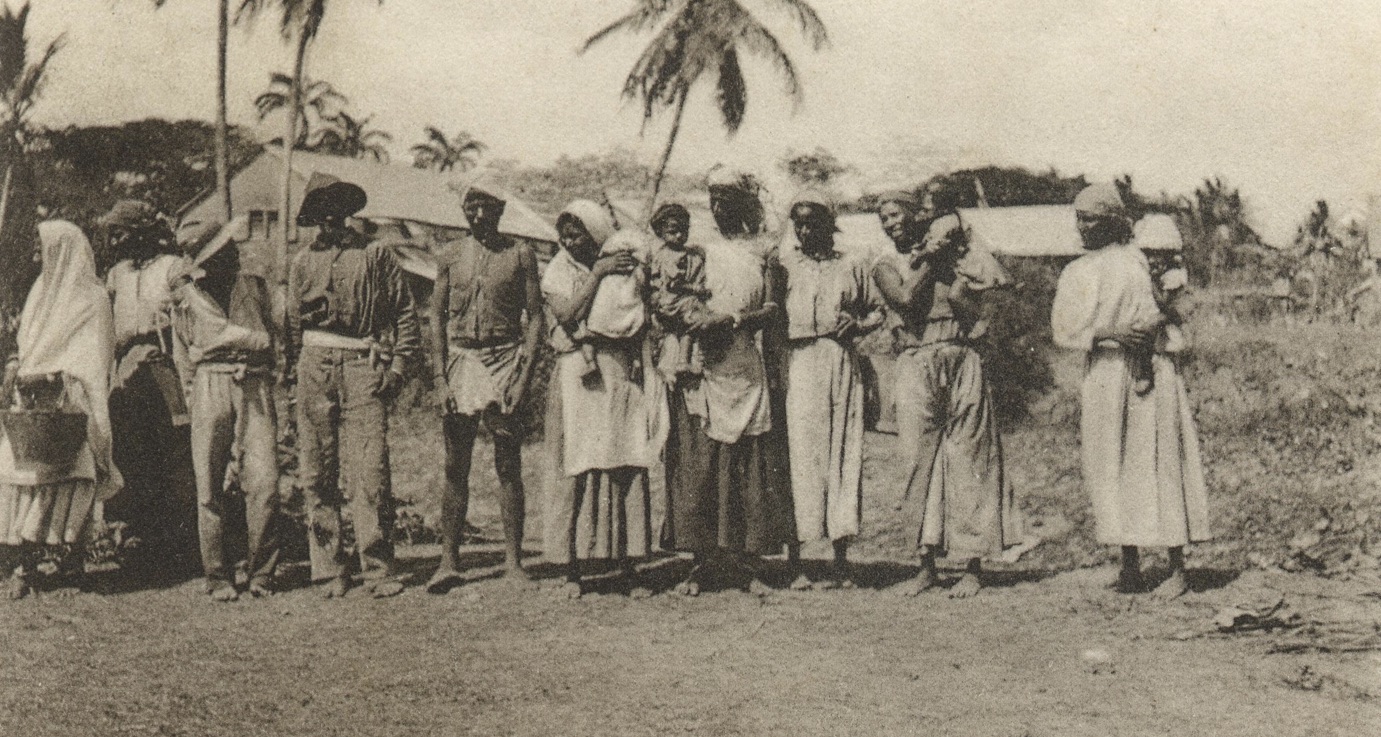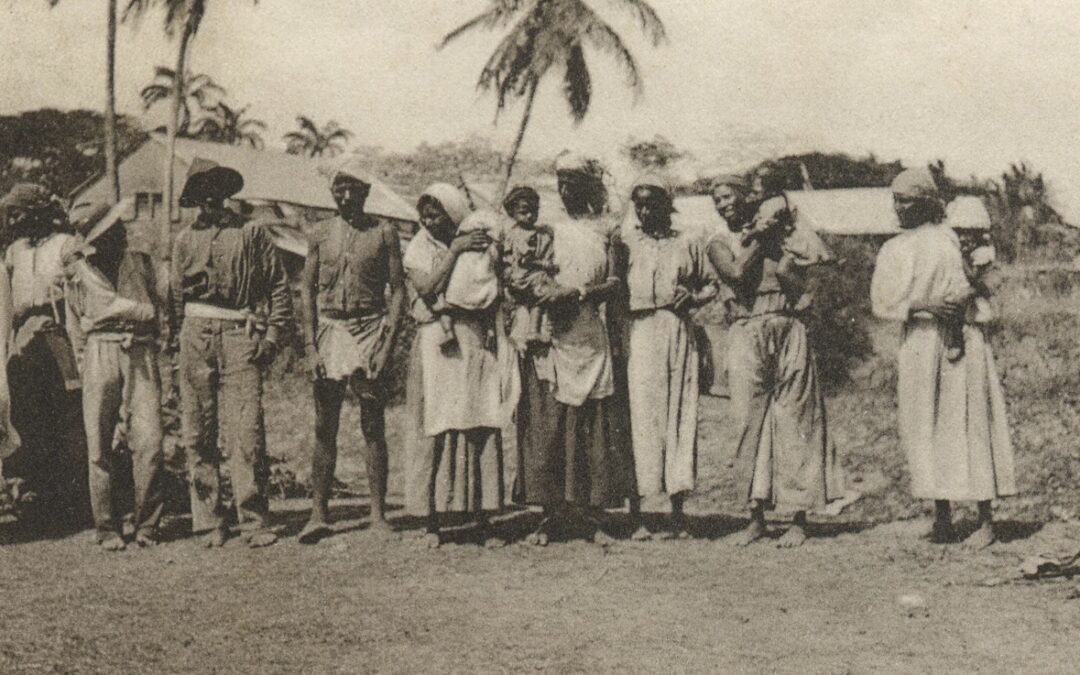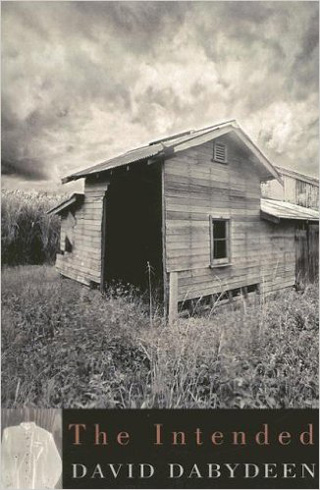by Dr Maria del Pilar Kaladeen, Associate Fellow at the Institute of Commonwealth Studies
In partnership with Gitanjali Pyndiah (PhD candidate, Goldsmiths) and Institute of Commonwealth Studies colleagues Dr Catherine Gilbert and Dr Kavyta Raghunandan, from 3 to 5 May, 2016, Maria will be live streaming “‘We Mark Your Memory in Songs’: Literary Remembrances of the System of Indenture“, a series of three short talks on literary representations of the system of indenture and its legacies.

A group of Indian immigrants in then British Guiana
Over the years I have had the opportunity to meet scholars who have done academic work on overseas Indian communities from a variety of disciplines, from geographers to musicologists, historians to sociologists. The vast majority have had roots in the indenture system, often being motivated to study their chosen topic out of curiosity about their own history. One thing that has united me with these academics, regardless of where our indentured roots lie, is a love of literature and an opportunity to share our joy in the discovery of texts in which we are spoken to, for and about by people who share our heritage. This, in large part, is the motivation behind the Periscope live-streaming event ‘We Mark Your Memory in Songs’.
To my mind, every novel, poem or short story about the system of indenture and its legacies in overseas Indian communities is an act of resistance against the erasure that surrounds the transportation of East Indians across three continents between 1838 and 1917. Whilst people may have a general awareness of the Indian presence in places like Guyana, Fiji, Mauritius, South Africa and Trinidad, it is rare outside of these communities to encounter someone who knows how they first arrived there. The Indian-Guyanese diaspora often tackle the additional frustrating problem of having to explain where Guyana is. Being born and brought up in London this is something I have found myself doing on a weekly basis since I was a child. Once, a contact at the Guyana High Commission in the UK advised me to write ‘South America’ clearly at the bottom of an important letter I was sending to an official in Georgetown, ‘Or it will get sent to Ghana,’ he explained without irony.
It was by reading works of literature rather than history that I developed an interest in the system of indenture. Many years ago, before I had an idea of what I would do after completing my undergraduate degree, I read a copy of David Dabydeen’s novel The Intended. This was the first novel I read by an Indian-Caribbean writer and its depiction of how racism shaped the lives of a group of teenagers growing up in London resonated tremendously with me. Its proximity to my own experiences make it apt to me now that I discovered this book before the beautiful but canonical A House for Mr Biswas by V.S Naipaul or the powerhouse poetry of Mahadai Das or Rajkumari Singh. What affected me particularly in The Intended was the chief protagonist’s reflections on his childhood in Guyana and the stories that surrounded his ancestors. Around the same time I became aware, through speaking to my father’s family, of the epic personal stories that surrounded the indenture system: I heard tales of bold and brave women who boarded boats alone to travel unthinkable distances. In the vast majority of cases they were leaving a homeland they would never see again.
I may have had inkling after reading The Intended that my future lay somewhere in the past; this was confirmed when I stumbled across a copy of Moses Nagamootoo’s Hendree’s Cure in a bookshop near Piccadilly Circus. It was through a conversation with my father about this novel that I learnt that his maternal grandfather, my great-grandfather, was a first generation Indian-Guyanese of South Indian descent, a minority group beside the massive majority of North Indian labourers who were favoured — and stereotyped — by the British as less rebellious and thus more suitable for plantation work. My decision to do postgraduate study in the field of indenture was sealed at this point and I went on to write my MA thesis on the South Indian community of Guyana. I looked at the colonial representations of this group in archival documents and analysed how Indian-Caribbean writers have both played with and perpetuated the colonial stereotypes constructed about South Indians.
The study of indenture is still an emerging field and this is what makes works like Nagamootoo’s first novel so important. To the best of my knowledge, Hendree’s Cure and Peter Kempadoo’s Guyana Boy are the only literary works written by Guyanese writers of South Indian descent. They give us valuable insight into the lives of Indian-Guyanese minority communities. It is of course not just Nagamootoo and Kempadoo who have presented us with literature that represents minority communities. To name but two others, Jan Lowe Shinebourne’s The Last Ship and Ryhaan Shah’s A Secret Life are equally important works that have contributed achingly poignant portrayals of the Chinese-Guyanese (Shinebourne) and Muslim Indian-Guyanese (Shah).
When I read works about those who existed as minorities within minorities under the indenture system I return to the archive more resolute and determined. While writing my PhD thesis I had an opportunity to recover short texts written during the period of indenture by Muslim and South Indian authors. Being a tiny part of the movement to redeem the history of indenture from the seemingly bottomless well of ‘hidden histories of Empire’ is rewarding, but my journey would have been impossible without the inspiration provided to me by the Caribbean writers who have determined my academic choices.



Recent Comments